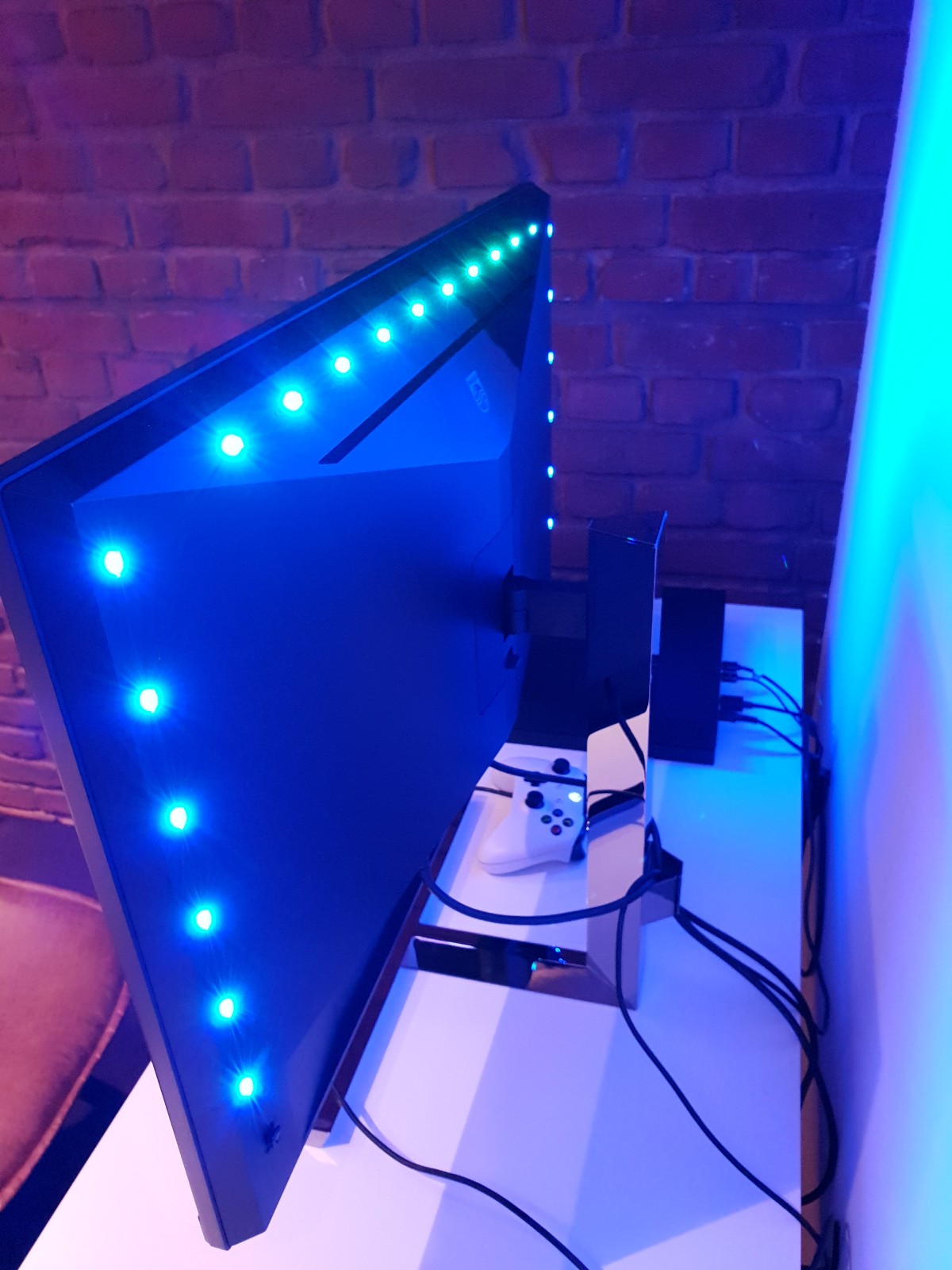Philips 328M1R 120Hz 4K UHD VA model
As an Amazon Associate I earn from qualifying purchases made using the “Buy” button at the bottom of this post. Where possible, you'll be redirected to your nearest store. Further information on supporting our work.Update: Added new information due to redesign of this product and delay to planned release. News piece below initially published 5th September 2019.
Many users would agree that a screen size of ~32″ is optimal for the ‘4K’ UHD resolution. Delivering a good experience with little to no scaling and giving a distinct ‘4K’ look to suitably high resolution content. The Philips 328M1R of the company’s Momentum lineup is marketed as a console gaming monitor, due to a feature-set that even the next generation of games consoles will benefit from. This feature-set is also appealing to PC gamers and other users. The design of the monitor distances itself from older members of the series. The prototype we had a play with at IFA 2019 made a bad start with its rather tacky chrome-effect shiny plastic stand, but thankfully the actual production model will feature a matte black or dark grey stand. The bottom bezel is matte black plastic (yay), whilst the top and side bezels have a dual-stage design. With a slim panel border that’s flush with the rest of the screen plus a hard plastic outer component. The OSD (On Screen Display) is controlled by a small joystick at the rear, towards the right side as viewed from the front. A TV-style infrared remote is included as an intuitive alternative.

The monitor employs a 31.5″ VA (Vertical Alignment) panel with 3840 x 2160 (‘4K’ UHD) resolution. This is accompanied by a 120Hz refresh rate and support for Adaptive-Sync, including AMD FreeSync. The variable refresh rate range has not yet been disclosed, but 48 – 120Hz with LFC support is expected. The screen is glossy, with a mild (low haze) matte anti-glare finish. Although difficult to assess in the lighting conditions we used the product in, it certainly seemed to offer decent glare handling for a glossy screen and some would refer to it as “semi-glossy”. Some basic testing indicated a flicker-free backlight was likely used. VESA DisplayHDR 600 support is included. This mandates the ability for 10-bit colour to be used, a maximum luminance of at least 600 cd/m², local dimming support and at least 90% DCI-P3 colour space coverage. Although these and various other aspects of the specification are still to be finalised at this stage.
A key goal of this product is low input lag, with <4ms being targeted. Although not yet specified, we'd expect a 4ms grey to grey response time to be specified. But as usual, take such specifications with a dose of salt. We were able to play a few Xbox One X titles on the monitor but were unable to view higher refresh rate content or run basic tests such as Test UFO. There were no real standout issues with pixel responsiveness in the confines of this testing environment, though. The subpixel layout appeared 'unconventional' with some faint hatching and mild interlacing apparent on some textures. This was considerably more subtle than on the 436M6VBPAB, without a strong checkerboard effect and only sight imperfections when viewed from a very close distance – close even for a desktop monitor. Obviously this sort of thing will require more careful analysis on the final product, but it definitely looks an improvement over the older 43″ model. A key feature of this model that was demonstrated in a very obvious way at IFA was the Ambilight ambient lighting system. This consists of 22 (on the prototype) RGB LEDs at the rear of the monitor. 6 towards each side and 10 towards the top. These can be controlled in the OSD and can react to on-screen content or music. They were certainly very bright and vibrant (depending on settings), able to easily illuminate a large section of the wall behind the monitor and some of the desk beneath.

Another feature of note includes ‘Low Blue Mode’ Low Blue Light (LBL) settings, for more comfortable viewing. Particularly useful in the evenings, where exposure to stimulating blue light should be minimised. The included stand offers tilt and swivel adjustment, attached centrally using a quick-release mechanism. This can be easily removed to make way for an alternative 100 x 100mm VESA solution. The ports are down-firing and include; AC power input (internal power converter), 3 HDMI 2.0 ports (HDMI 2.1 now confirmed), DP 1.4, 4 USB 3.0 ports and a 3.5mm headphone jack. A 2.1 DTS sound system (5W speakers plus sub) is also included. The prototype had some additional ports which may or may not make it into the final product. The monitor was originally scheduled for a May 2020 release with an expected MSRP of €599. The release of this product has been pushed back to 2021 to ensure HDMI 2.1 can be included for use with “next-gen” games consoles. The refresh rate may be pushed up slightly to 144Hz maximum, too.
![]()
|
